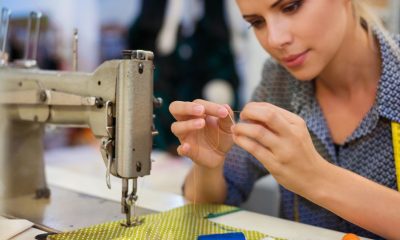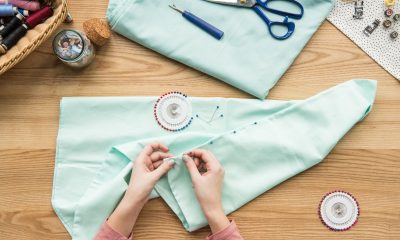Supplies And Equipment
Essential Sewing Tools For Beginners
Sewing can be a daunting endeavor for even the most experienced of crafters. But with the right tools, it doesn’t have to be rocket science. Like they say, “the right tool for the job”—and that’s true when it comes to sewing, too.
We’ll take a look at all the must-have essentials you need to get started on your own sewing journey. From fabric scissors and needles and thread to ironing boards and marking tools—you don’t have to break the bank purchasing these items either.
So don’t let fear stop you from getting creative; let’s dive in and explore all the essential sewing tools for beginners today.
Key Takeaways
- The must-have tools for beginners include fabric scissors, needles, pins, and a seam ripper.
- Investing in quality tools, such as a sewing machine, can lead to greater accuracy and long-lasting use.
- Other useful tools for beginners include thimbles, pinking shears, and thread.
- Beginners should also prioritize measuring tools, marking tools, a self-healing cutting mat, and an iron and ironing board for successful garment construction.
Fabric Scissors
You need a good pair of fabric scissors to get started – they’re the cornerstone of any beginner’s sewing kit.
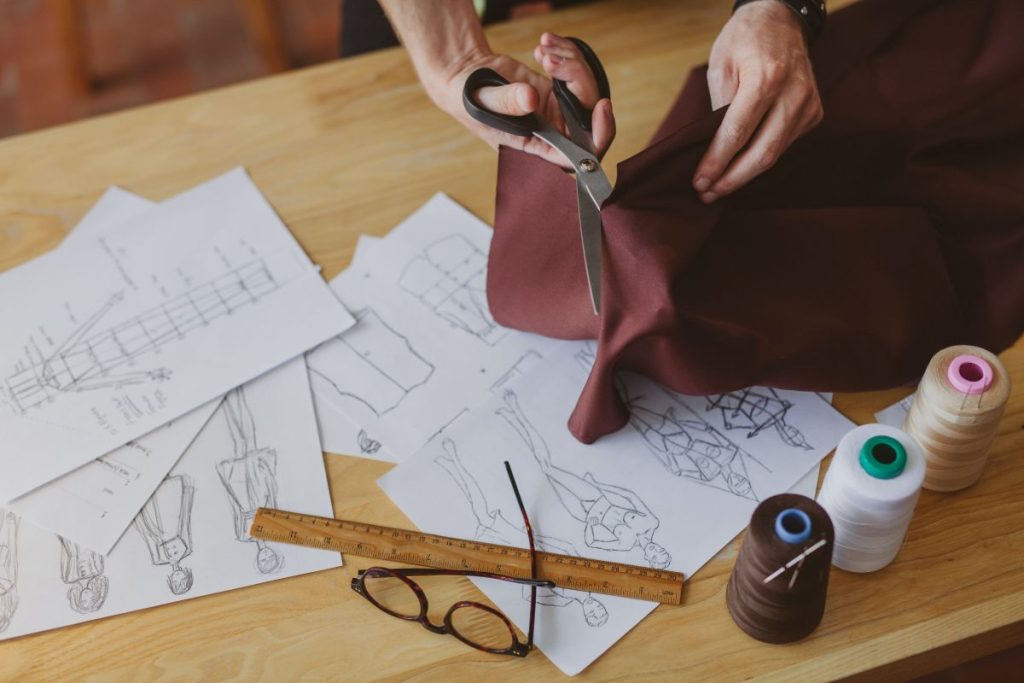
Fabric scissors are a must-have sewing tool for all crafters, regardless of skill level.
They help you easily cut through different fabrics with accuracy and precision. And they can be used for many things like cutting thread, cutting out patterns, trimming seams, and snipping seam allowances.
With the right pair of fabric scissors in your arsenal, you’ll be able to tackle most tasks with ease and confidence. Fabric scissors come in various shapes and sizes to accommodate different types of projects.
For larger projects like quilting or upholstery work, scissors with longer blades are usually recommended, as they allow you to make long cuts without having to move the fabric around too much.
On the other hand, smaller blades are perfect for cutting intricate details on smaller items such as clothing or accessories.
It’s important that you choose a pair that feels comfortable in your hands so that you can have complete control when making cuts.
When selecting a pair of fabric scissors, it’s essential to look for quality over quantity – opting for higher-end models will ensure that your tools last longer and perform better over time.
Overall, having the right set of fabric scissors is essential for anyone looking to start their own sewing journey – no matter what type of project you have planned ahead.
Sewing Machine
Choosing a sewing machine is an important decision for any crafter. A good sewing machine can make or break your crafting experience, so it’s essential to find one that works best for you.
There are many types of machines available on the market, all with different features and capabilities.
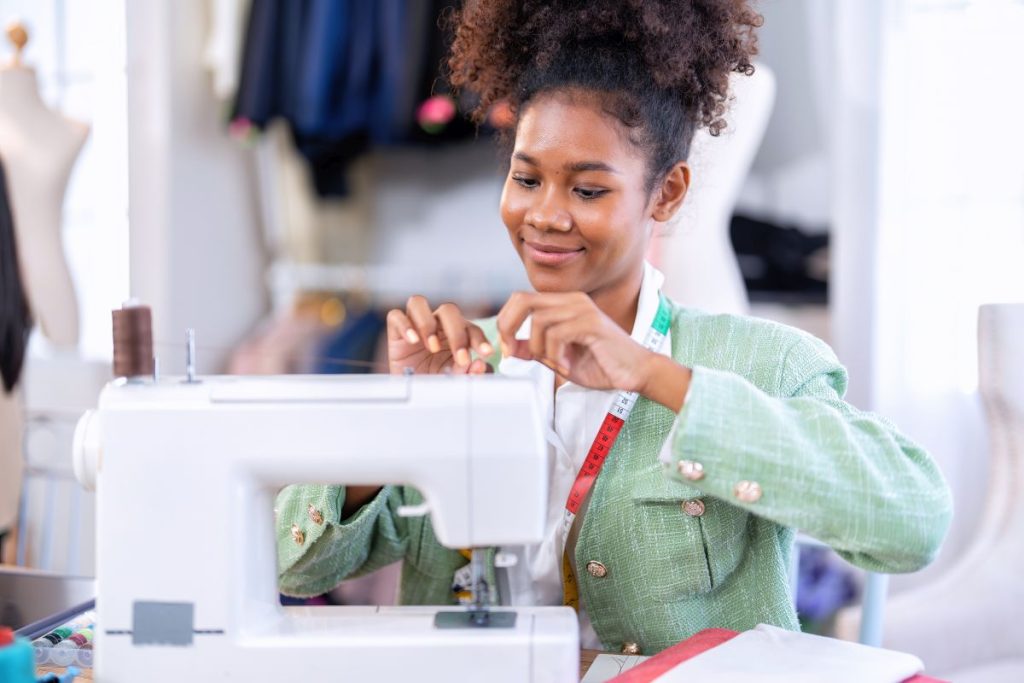
Whether you’re looking for a basic sewing machine like the traditional Singer for basic projects or something more advanced to tackle more complex tasks, such as the Singer Sewing and Quilting Machine, there are plenty of options to choose from.
In addition to these items, it’s also important to consider the features offered by each machine before making your purchase – such as needle size selection and stitch length – so that you get the most out of it when creating projects using different types of fabrics and techniques.
With these basics in mind, finding the right sewing machine doesn’t have to be overwhelming – take some time researching what will work best for your needs and budget.
Seam Ripper
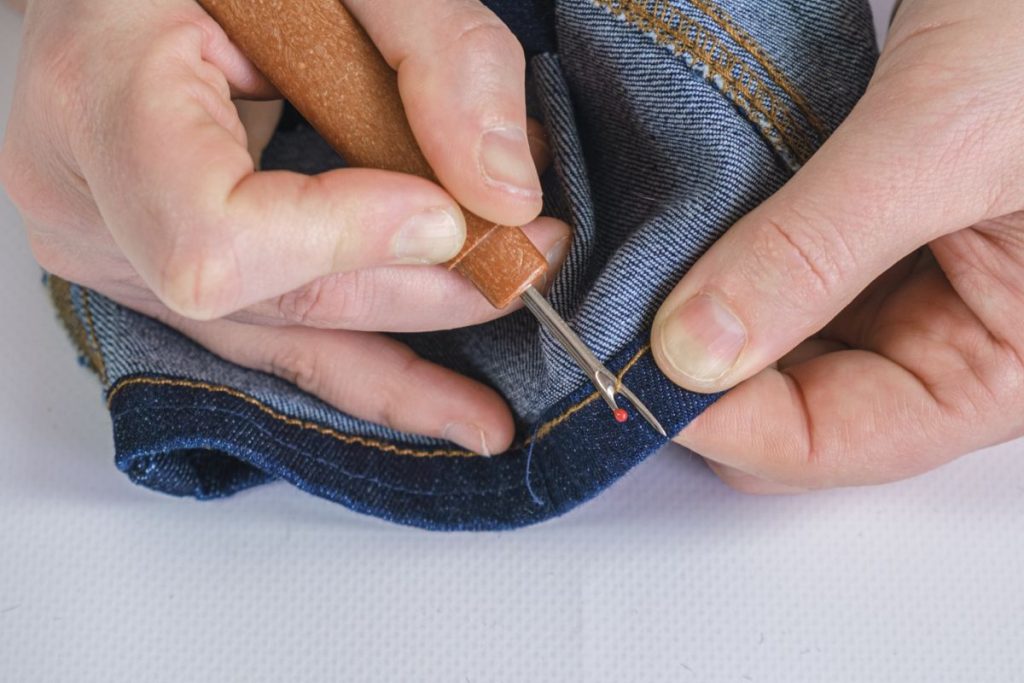
With its sharp edges and curved tip, the seam ripper can be your crafty savior, swiftly snipping away any mistakes you make along the way. As a beginner sewist, it’s important to arm yourself with this essential sewing tool when navigating through your projects.
Seam rippers are an invaluable part of basic sewing supplies and are great for removing unwanted stitches or making alterations in fabrics. With just a few quick snips from your seam ripper, you can easily undo any hand-sewing mistakes that may happen during your creative journey.
The right tools can make all the difference when it comes to achieving successful results with sewing projects; having a quality seam ripper is key.
Not only will it help you tackle tricky tasks like taking out zippers or unpicking hems quickly, but it also helps reduce fabric damage by preventing fraying or tearing of delicate materials.
Plus, its ergonomic design makes gripping easier and safer for beginners who aren’t used to using sharp tools yet.
Pins and Needles
When it comes to crafting garments and other textile-based projects, don’t forget the importance of having pins and needles on hand.
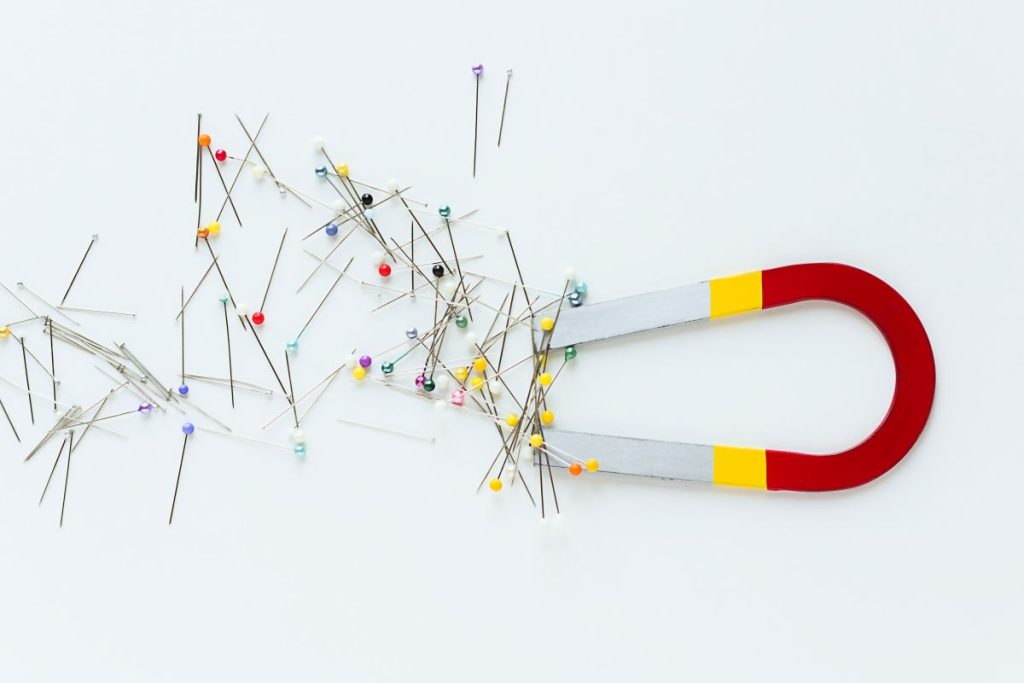
From sewing needles to hand-sewing needles, there are some essential tools you’ll need when getting started with your first project:
Sewing Pins: These pins come in a variety of shapes and sizes and are used for temporarily holding the fabric in place while seams are being sewn.
Sewing Machine Needles: You’ll need to make sure that the size of the needle is appropriate for the weight of your fabric before you start using your machine.
Sewing Needles: Use these for those times a sewing machine is too much. These needles come in various sizes and if you have trouble threading the needle, get them with larger eyes.
Thread
Thread is an integral part of any textile project, and it’s estimated that the average person uses about one mile of thread in their lifetime.
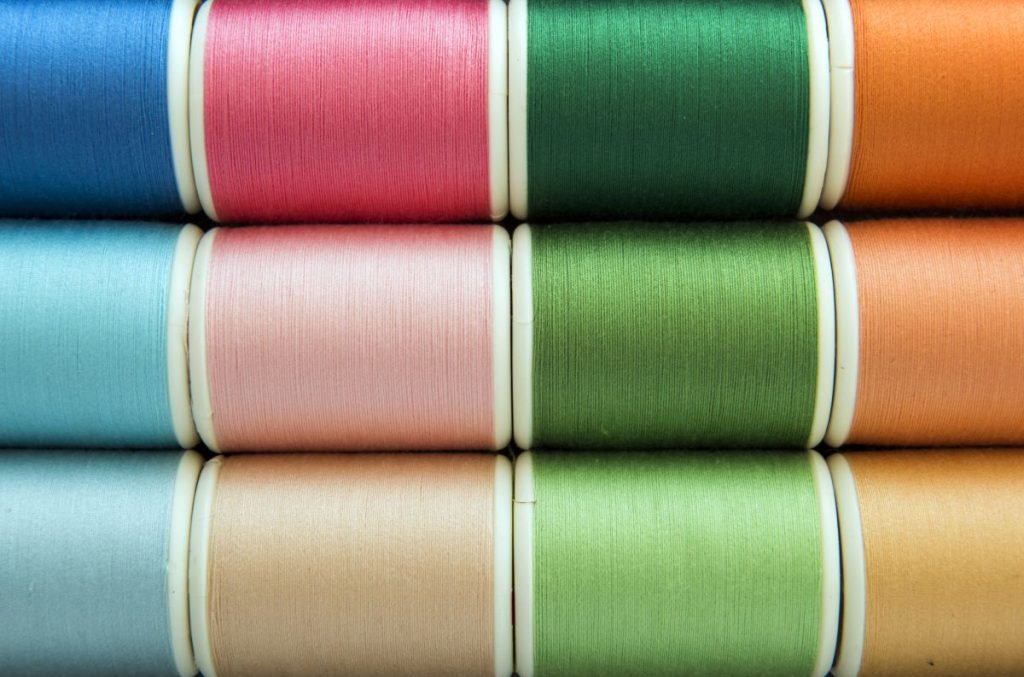
When it comes to sewing, you need a quality sewing thread that won’t break apart easily. You’ll want to choose a strong thread made specifically for sewing that comes in colors and weights suitable for your material.
Measuring Tape
Measuring tape is a must-have for any sewing project, so you’ll want to make sure you don’t start a project without it. With its flexible and durable design, measuring tape will help you create precise cuts and accurate measurements of fabric pieces. It’s an invaluable tool that’ll make your projects look professional and polished.
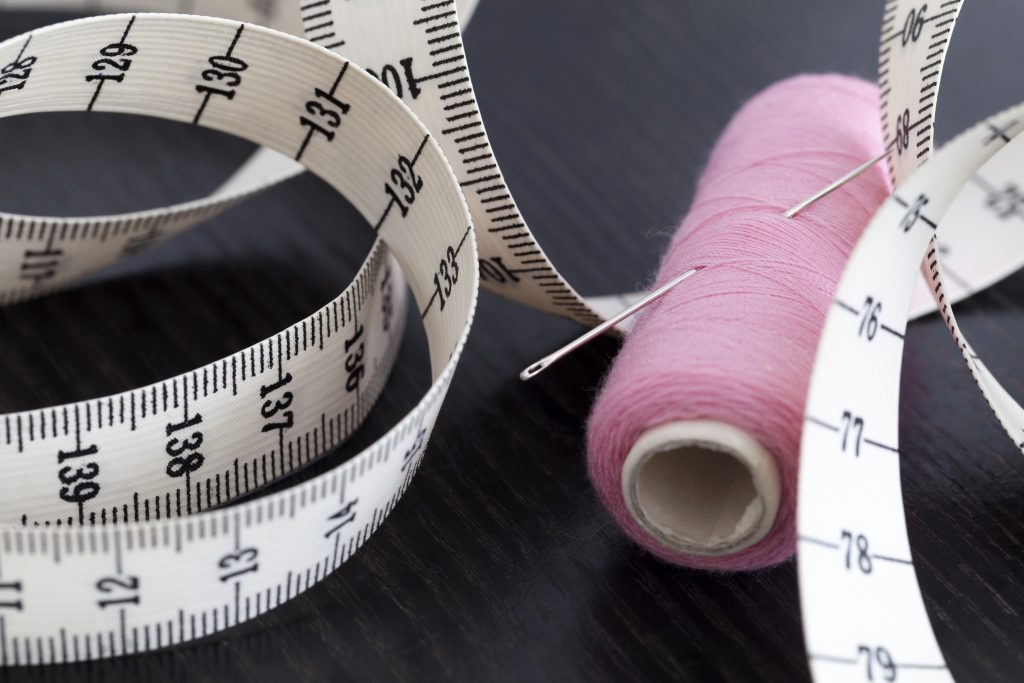
To measure accurately, place the end of the measuring tape on one side of the fabric and pull it tautly across the width or length before taking note of the measurement.
Iron and Ironing Board
Now that you’ve got the essential measuring tape in your sewing kit, it’s time to move on to perhaps one of the most important tools for any seamstress – an iron and ironing board.
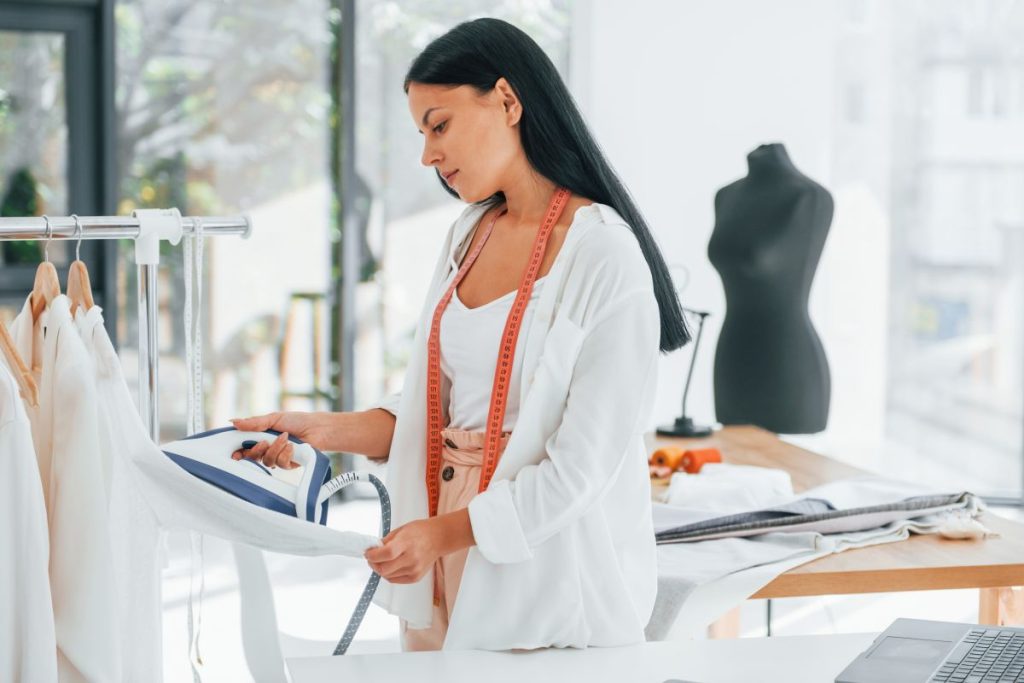
A good iron is necessary for successful garment construction. It ensures that all seams are pressed correctly and helps complete the overall look of a finished garment.
- The SINGER SteamCraft Iron is designed for the sewist or the avid ironer....
- Onpoint Tip Technology (patent pending)-easily iron around buttons, seams,...
- Strong Burst Of Steam-Enjoy expert results with 1700 watts of steam. Watch...
As an Amazon affiliate, I make a commission when you click on a link.
The best irons for basic sewing projects will feature adjustable temperatures, steam functions, and possibly auto shutoff features if left idle for too long.
In addition to the iron itself, having an appropriate ironing board with a secure surface is just as essential for pressing garments properly. Look for a sturdy model with adjustable height so you can work comfortably while pressing seams.
Many boards also come with special attachments, such as self-healing mats or sleeves, which protect delicate fabrics from scorching when using high heat settings on the iron.
Marking Tools (Chalk, Fabric Pencil, etc.)
Making precise pattern markings can seem like an impossibility when you first start sewing, but with the right marking tools, it can be a breeze. Whether you’re hemming a pair of pants or cutting out fabric for a dress, having the right supplies is key.
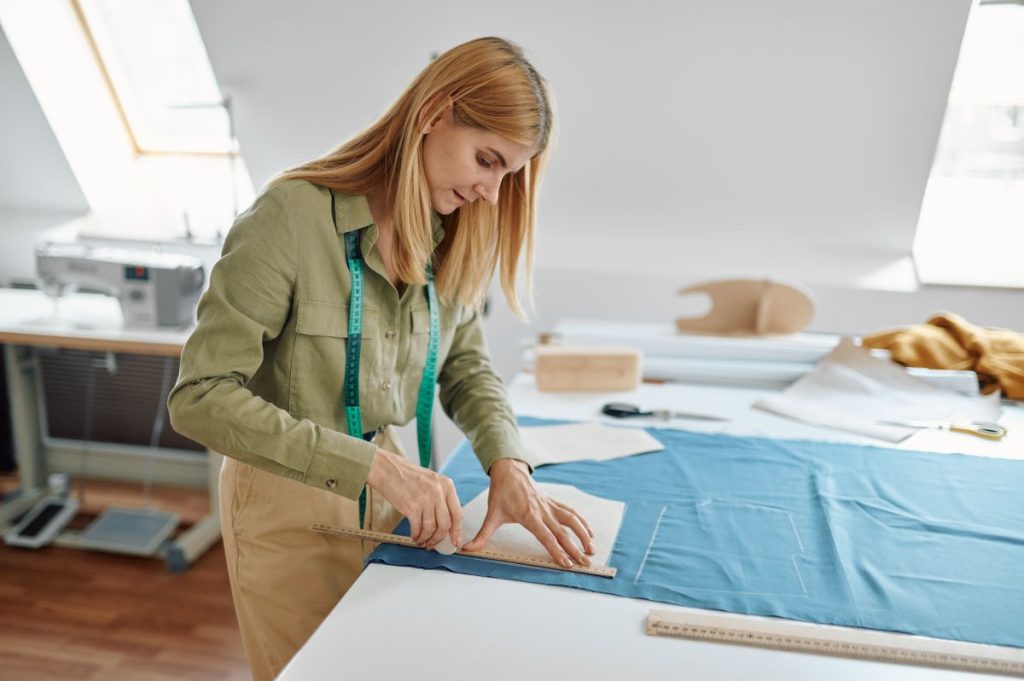
The essential marking tools you need to become a pro seamstress include:
Chalk – This is used for quickly and easily drawing lines on fabric that’ll easily wash away.
Fabric Pencils – These pencils mark more precisely and cleanly than chalk and usually come in multiple colors.
Tracing Wheel – This tool allows you to trace patterns onto fabric without having to redraw them every time.
Tailor’s Awl – Use this to make small holes in your fabric that’ll help guide your scissors when cutting multiple layers of fabrics at once.
When purchasing these items, make sure they’re specifically designed for use on fabrics as regular office supplies won’t do the trick! It’s also important to have a good cutting surface, such as a self-healing mat and rotary cutter (optional).
Proper sewing tools make completing projects much easier and ensures that your finished pieces look professional. With just these simple marking tools, you’ve got everything you need to create beautiful garments with perfect precision!
Cutting Mat and Rotary Cutter (Optional)
To ensure accuracy and finesse, it’s helpful to have a good cutting surface such as a self-healing mat and rotary cutter. These tools are essential for experienced sewers and should be considered down the road for beginners.
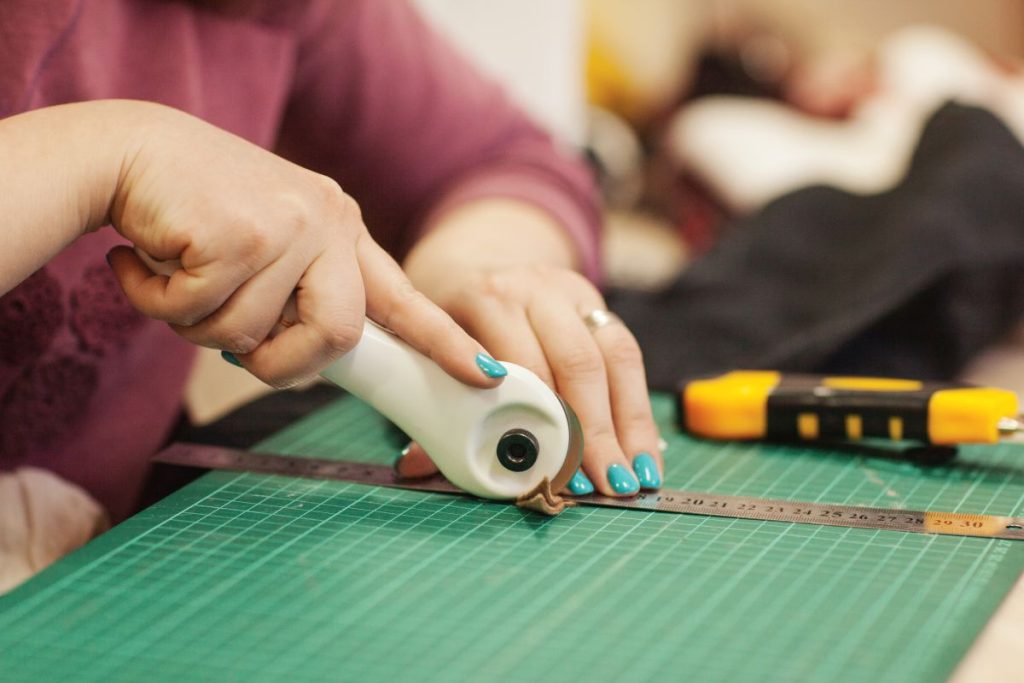
Not only do they make it easier to cut through fabric, but they’re also useful for cutting paper or even cardstock.
It’s important to learn how to properly use a rotary cutter and self-healing cutting mat before using them. Many craft stores offer classes that teach these skills. Investing in these two items is an excellent way to start off your set of sewing tools if you need to get started quickly.
Once you have your tools, you can explore storage and organization solutions that help keep everything in its place. This will make it easier to find what you need when it comes time to create something new.
Storage and Organization Solutions
Organizing your sewing supplies can be tricky, but having the right storage and organization solutions makes it much easier.
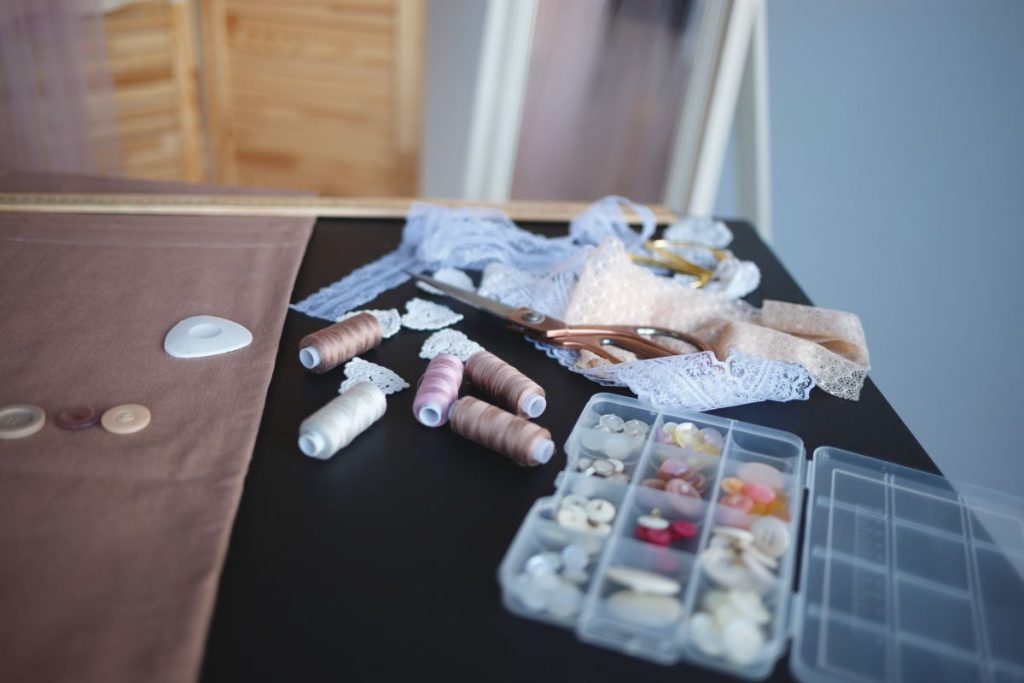
Whether you’re new to sewing or have been doing it for years, having well-organized supplies is always beneficial.
Thread Storage – keep all those many spools of thread organized and easy to find.
Needle Organizer – Keep your needles securely stored and this organizer makes it easy to remove them as well.
Storage Cabinets – You can keep all your sewing supplies neatly organized and this makes it easy to find stuff when you need it.
With the right storage solutions at hand, staying organized will be no problem at all, allowing more time to focus on beginner sewing projects instead of looking for misplaced materials.
Get Yourself These Essential Tools For Sewing Today
You’ve now got all the essential sewing tools you need to get started! You can feel confident that with these items, you’ll be able to create beautiful projects and garments.
With a bit of practice, you’ll be creating your own masterpieces in no time. So go ahead and start stitching – the possibilities are endless.
Frequently Asked Questions
How often should I oil my sewing machine?
Oil your sewing machine regularly to keep it running smoothly. Aim for every few months, or when you notice the machine is getting sluggish. Keep it lubricated and your projects will be finished in no time.
What are the best techniques for using a seam ripper?
Unraveling mistakes is a piece of cake! When using a seam ripper, go slow and steady. Get close to the stitches without snipping them. Cut one thread at a time, and you’ll be well on your way.
What type of pins and needles should I use for different fabrics?
For different fabrics, you’ll need various pins and needles. For heavier fabrics like denim or canvas, use larger and stronger pins. Delicate materials such as silk or chiffon require smaller and sharper needles.
How much thread should I use for a particular project?
For your project, use enough thread to secure the seams adequately. Don’t be afraid to experiment with different amounts for the desired effect.








